Imagine a garden adorned with the delicate beauty of pink flowers – a vision that can truly uplift the spirit. Whether you’re a seasoned gardener or just dipping your toes into the world of gardening, this article serves as your guide to unveiling 10 stunning pink blooms that will infuse your outdoor haven with natural elegance. Get ready to meet these floral wonders and transform your garden into a pink paradise.
Pink Flowers
1. Rose
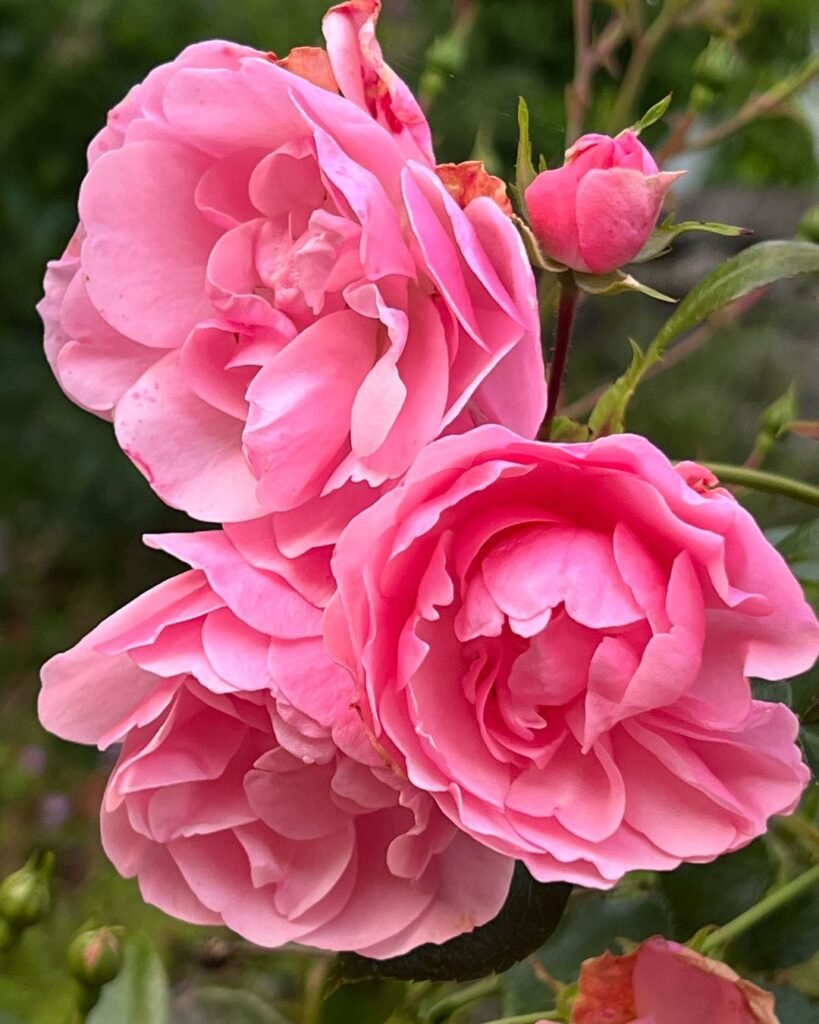
Here’s a short information chart about roses:
| Item | Information |
|---|---|
| Botanical Name | Rosa spp. |
| Plant Type | Flowering shrub |
| Zones | Typically Zones 3-11, depending on the variety |
| Exposure | Full Sun |
| Bloom Time | Spring to Fall, depending on the variety |
| Height/Spread | Varies by variety, typically 2-10 feet tall and wide |
The rose is a plant that grows beautiful flowers. Its name is from an old language called Latin, and it means “red “and it’s also called Rosa. Exuding romance and grace, the ‘Pink Perfection‘ rose is a showstopper with fragrant petals that make it a splendid centerpiece for any garden. Its timeless appeal resonates with both new and experienced gardeners alike.
2. Dianthus
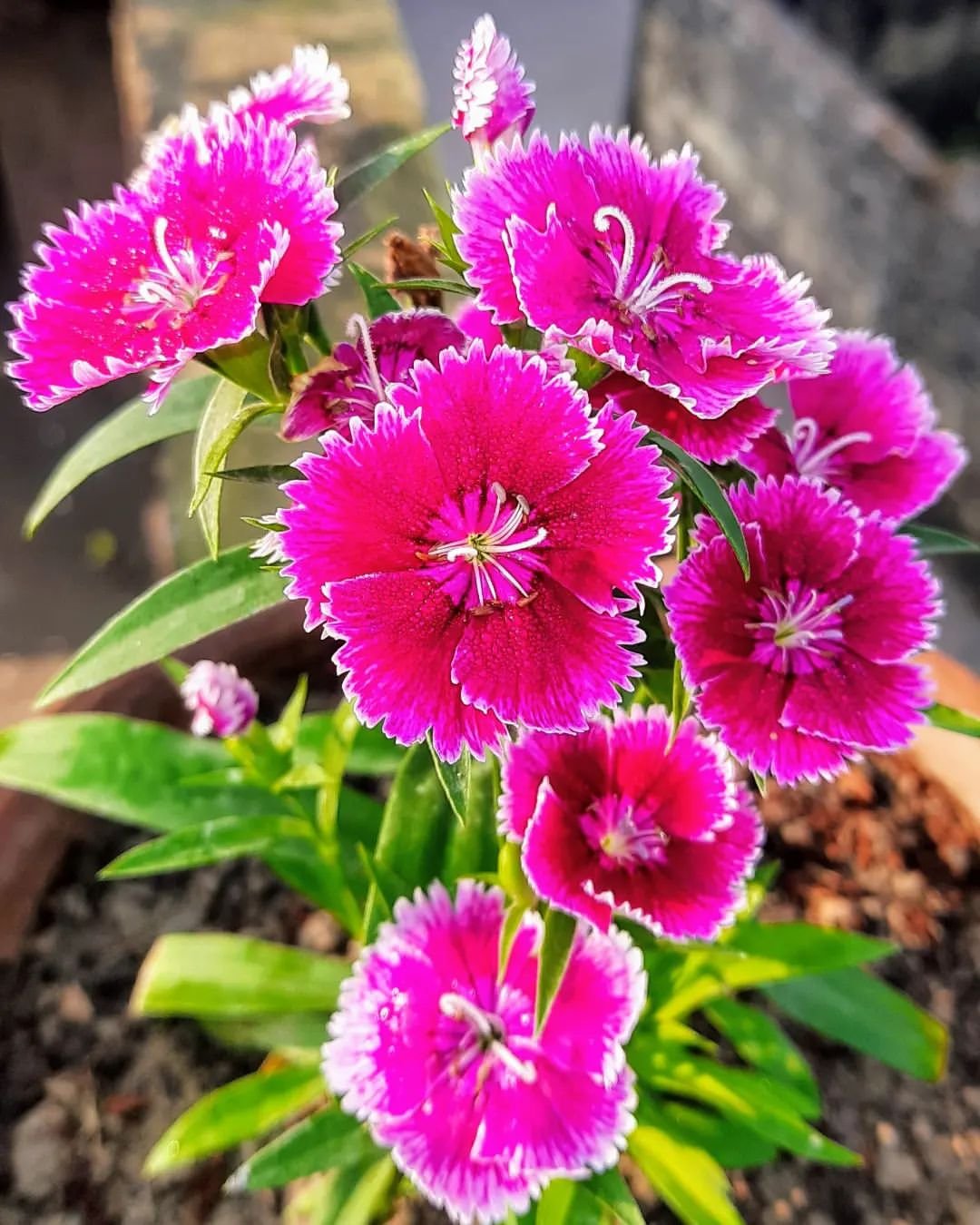
Here’s the short information about Dianthus:
| Aspect | Information |
|---|---|
| Botanical Name | Dianthus spp. |
| Plant Type | Perennial or annual |
| Zones | Varies depending on species |
| Exposure | Full sun to partial shade |
| Bloom Time | Spring to summer |
| Height/Spread | Height: 6 inches to 2 feet, Spread: 6 inches to 1 foot |
dianthus is a genus of about 340 species of flowering plants in the Caryophyllaceae family which are native mainly to Europe or Asia with a few species to north Africa or southern Africa Bringing a touch of playfulness, ‘Tickled Pink‘ dianthus boasts frilly petals ranging from soft blush to vivid pink. Perfect for borders and containers, it adds a delightful pop of color and charm.
3. Peony
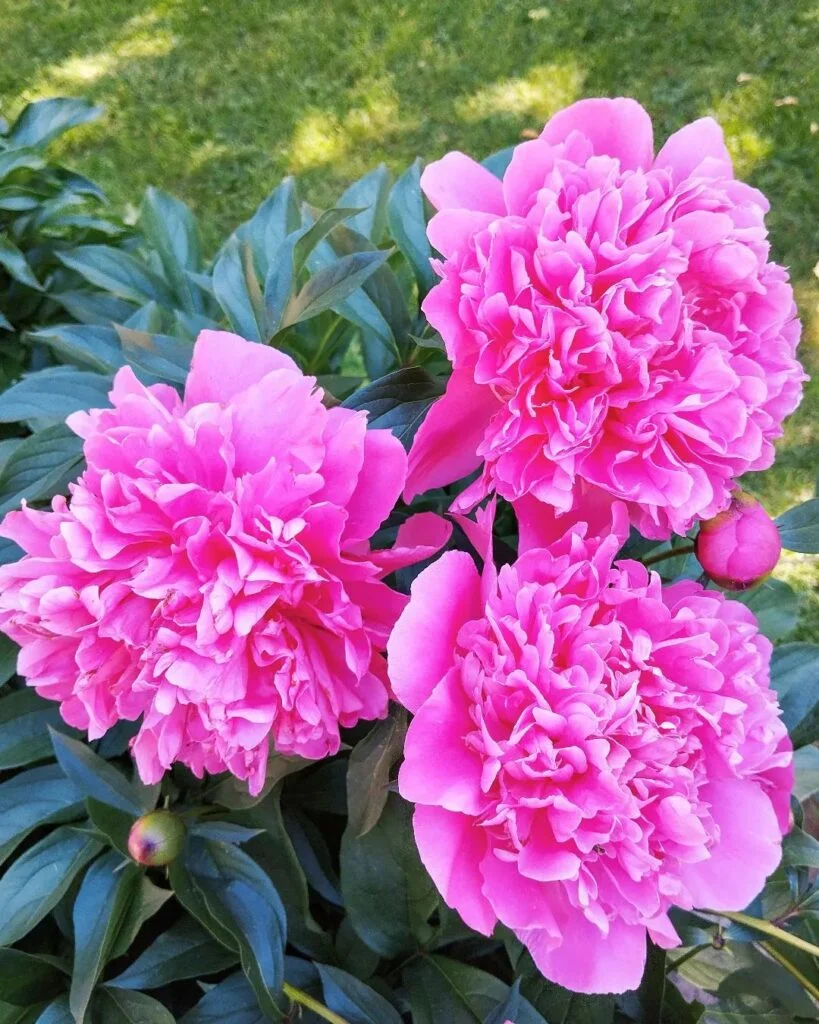
Here’s the short information about Peony:
| Aspect | Information |
|---|---|
| Botanical Name | Paeonia spp. |
| Plant Type | Herbaceous perennial |
| Zones | 3 to 8 |
| Exposure | Full sun to partial shade |
| Bloom Time | Late spring to early summer |
| Height/Spread | Height: 1-3 feet, Spread: 2-4 feet |
Sarah Bernhardt’ peony is a beautiful old-fashioned flower its name is pink petals it looks very lovely in the garden it shows how much people love pink flowers no matter what year it is.
4. Cosmos
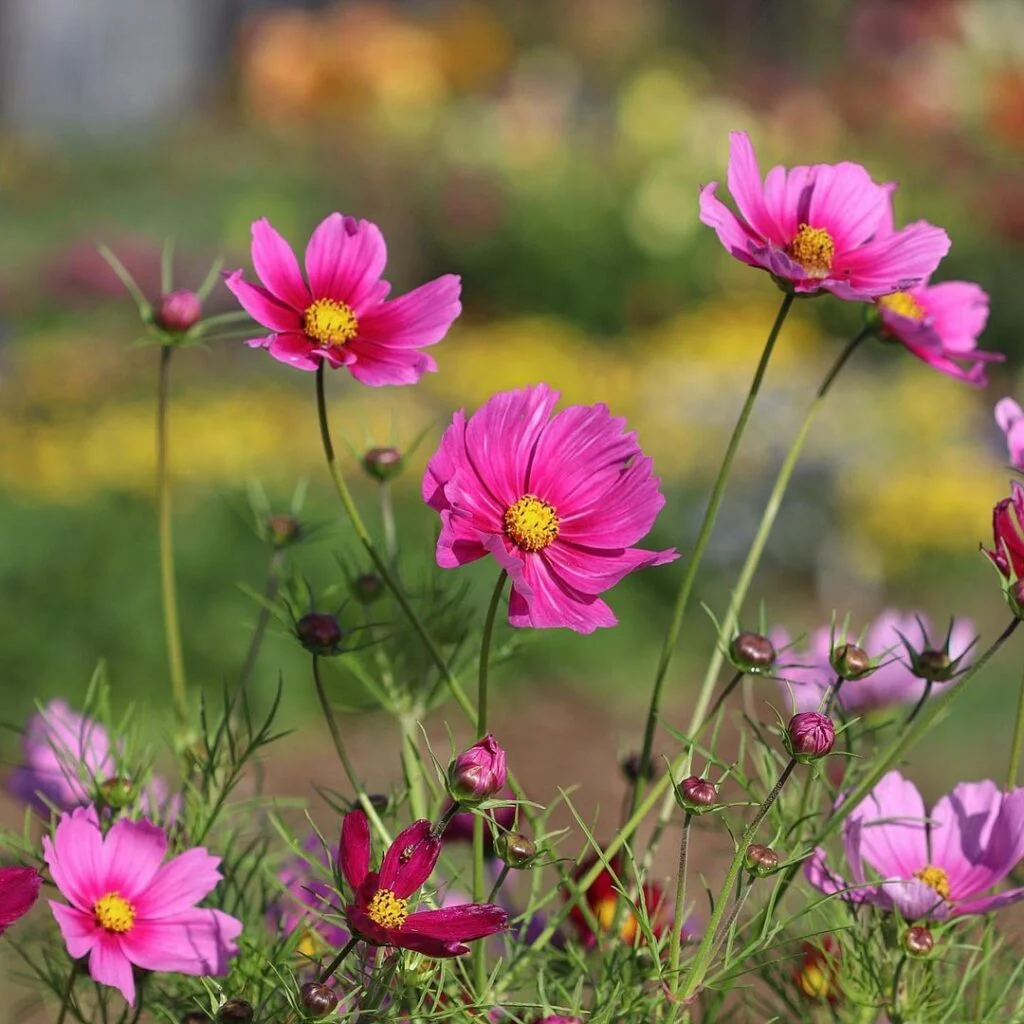
Here’s the short information about Cosmos:
| Aspect | Information |
|---|---|
| Botanical Name | Cosmos spp. |
| Plant Type | Annual |
| Zones | 2 to 11 |
| Exposure | Full sun |
| Bloom Time | Summer to fall |
| Height/Spread | Height: 1-6 feet, Spread: 1-3 feet |
Your garden will be full of happiness with the Sensation Mix cosmos. It has pink and white flowers that look fun and pretty. It is an easy-going plant that makes you feel the joy of being outside.
5. Carnation
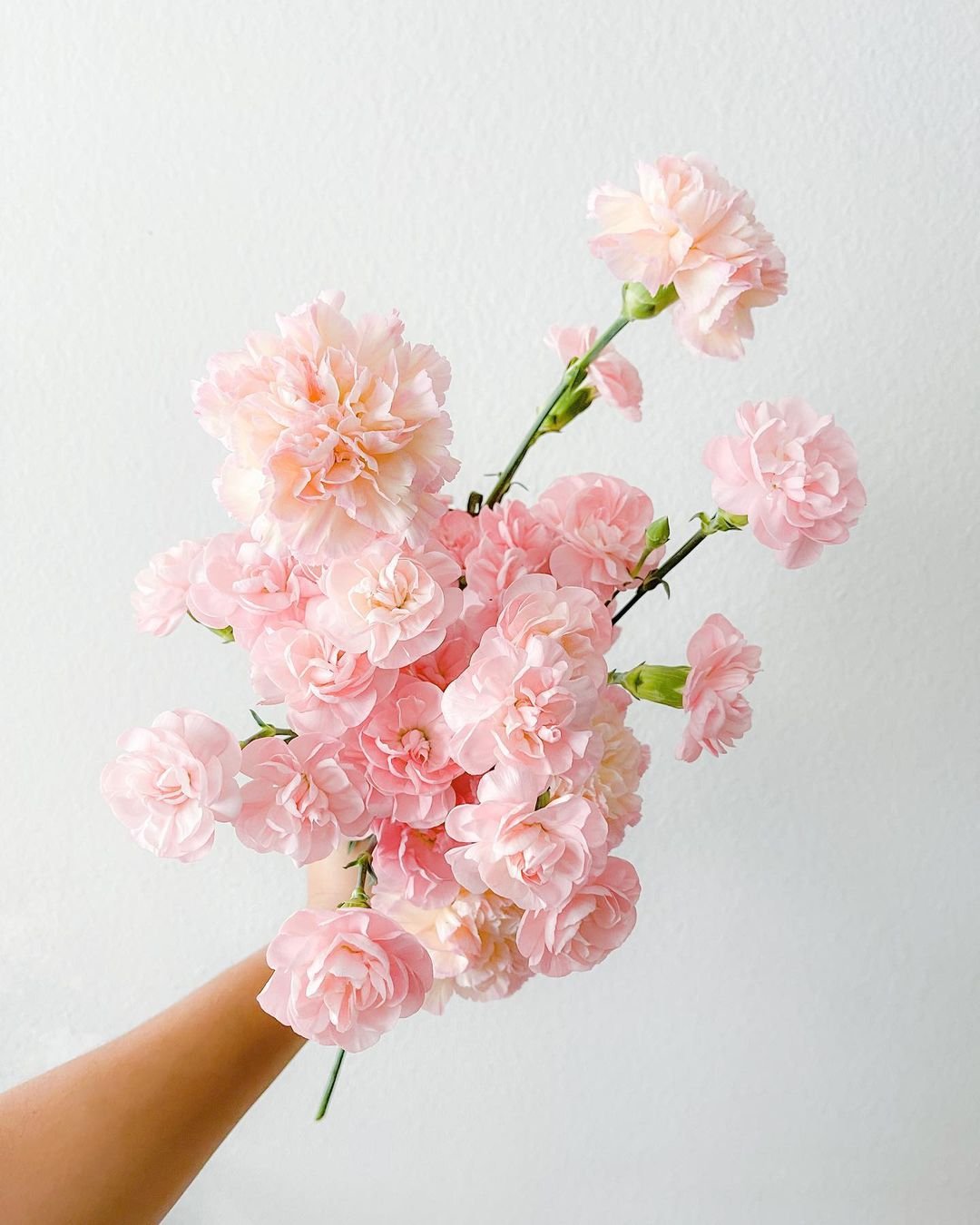
Here’s the short information about Carnation:
| Aspect | Information |
|---|---|
| Botanical Name | Dianthus caryophyllus |
| Plant Type | Perennial |
| Zones | 5 to 9 |
| Exposure | Full sun to partial shade |
| Bloom Time | Late spring to summer |
| Height/Spread | Height: 1-3 feet, Spread: 1-2 feet |
The Chabaud La France carnation is a beautiful flower. This is a symbol of beauty with its frilly petals and soft pink color, which makes the garden more natural. It adds a beautiful attraction to the garden.
6. Phlox paniculata
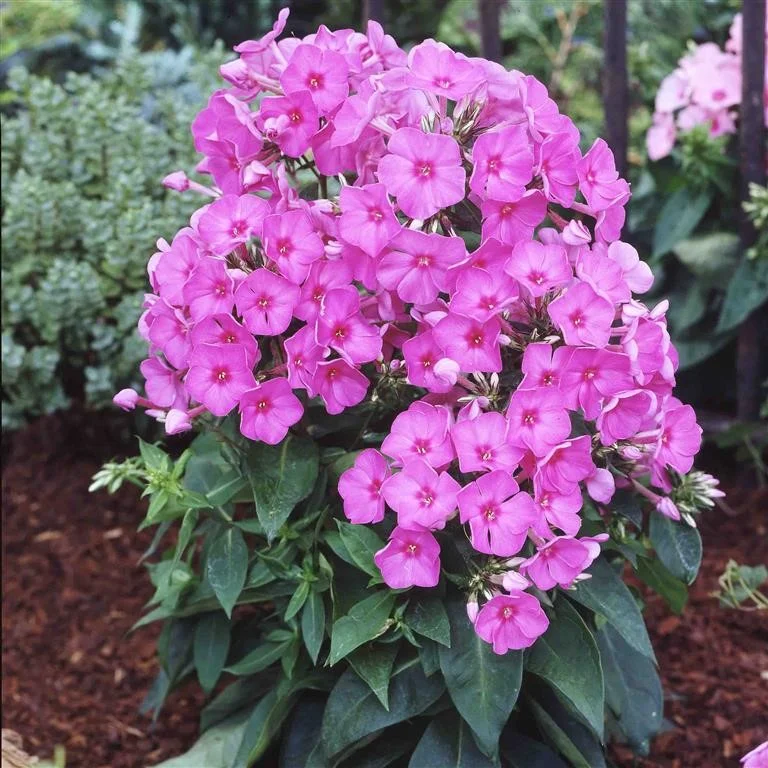
Here’s the short information about Phlox paniculata:
| Aspect | Information |
|---|---|
| Botanical Name | Phlox paniculata |
| Plant Type | Herbaceous perennial |
| Zones | 3 to 8 |
| Exposure | Full sun to partial shade |
| Bloom Time | Summer to early fall |
| Height/Spread | Height: 2-4 feet, Spread: 1-2 feet |
The David’s Lavender phlox is a flower that attracts bees and butterflies. It has pink and purple flowers that make the garden look bright and lively. Its colors are like a sign of life and energy.
7. Begonia Benigo
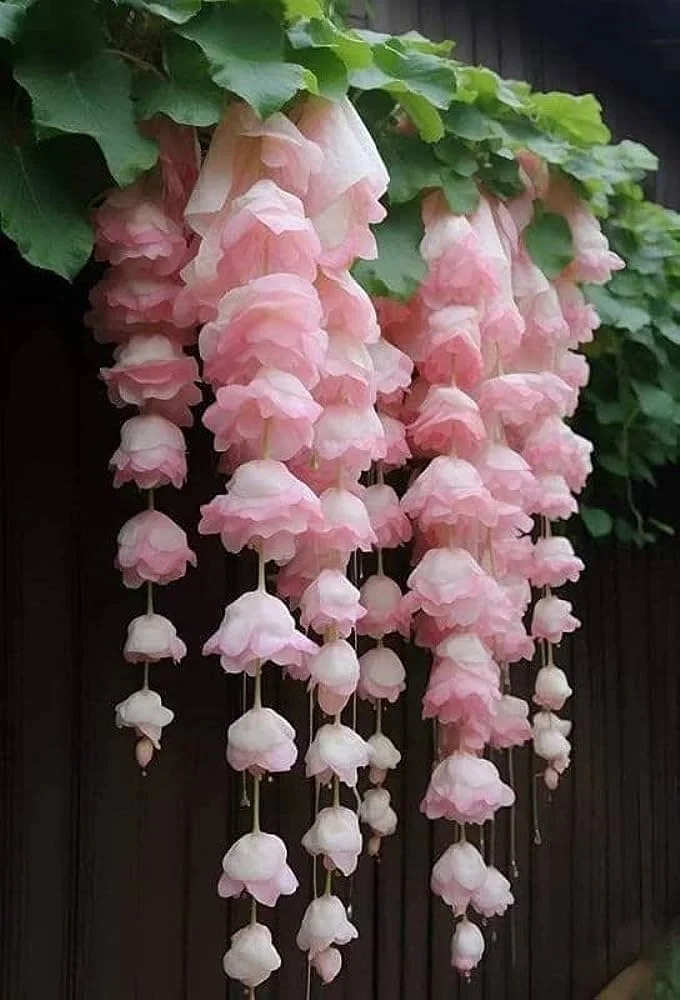
ere’s a short information chart about Begonias in general:
| Item | Information |
|---|---|
| Botanical Name | Begonia spp. |
| Plant Type | Typically grown as annuals or tender perennials |
| Zones | Typically Zones 9-11, but can vary depending on the species and variety |
| Exposure | Partial shade to full shade; some varieties can tolerate morning sun or filtered sunlight |
| Bloom Time | Summer to Fall, although some species can bloom year-round in suitable conditions |
| Height/Spread | Varies widely depending on the species and variety; can range from a few inches tall for dwarf varieties to several feet tall for taller varieties |
The Million Kisses Elegance begonia is a flower that looks good in pots and edges. It has pink flowers that fall down like a waterfall. It makes the garden look very pretty and exciting. It is like a firework for the eyes.
8. Clematis
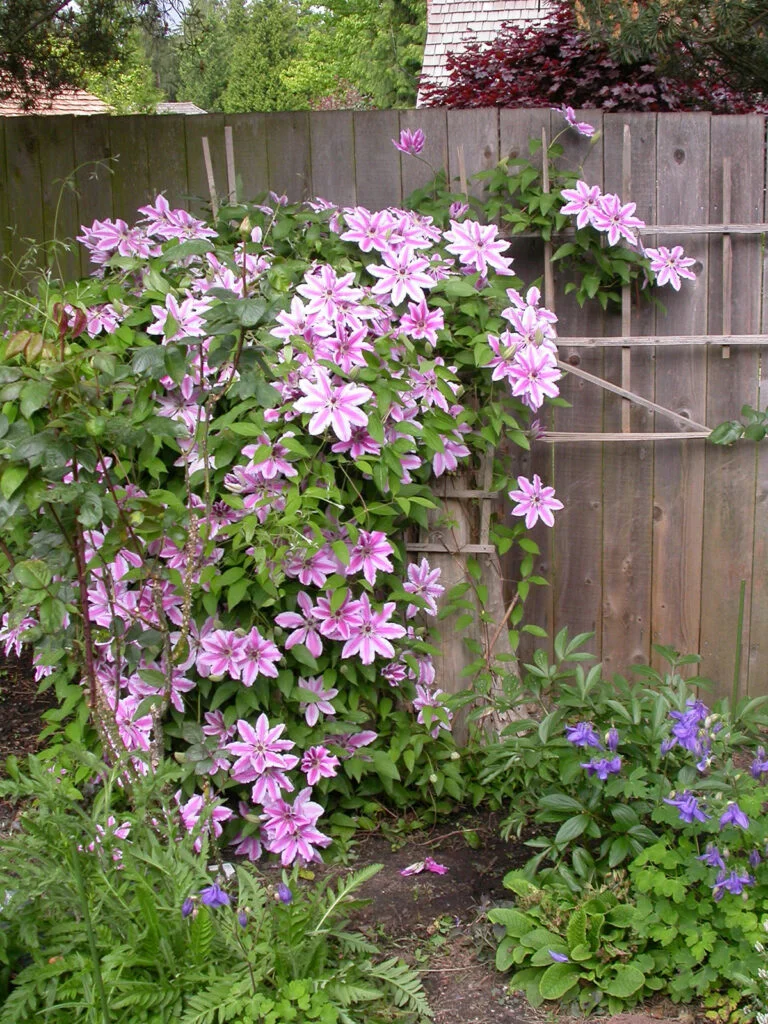
Here’s some information about it:
| Item | Information |
|---|---|
| Botanical Name | Clematis ‘Nelly Moser’ |
| Plant Type | Vine |
| Zones | Typically Zones 4-9, but can vary depending on the species and variety |
| Exposure | Full Sun to Partial Shade |
| Bloom Time | Late Spring to Early Summer, with some sporadic blooms in Summer |
| Height/Spread | Can grow up to 8-12 feet tall, with a spread of 3-6 feet |
the fragrant climbing nellie mosser clematics is proud of its pale pink flowers adorned with deep pink veins. Its vertical growth adds an enchanting dimension to fences and trellises.
9. Camellia or Japanese camellia
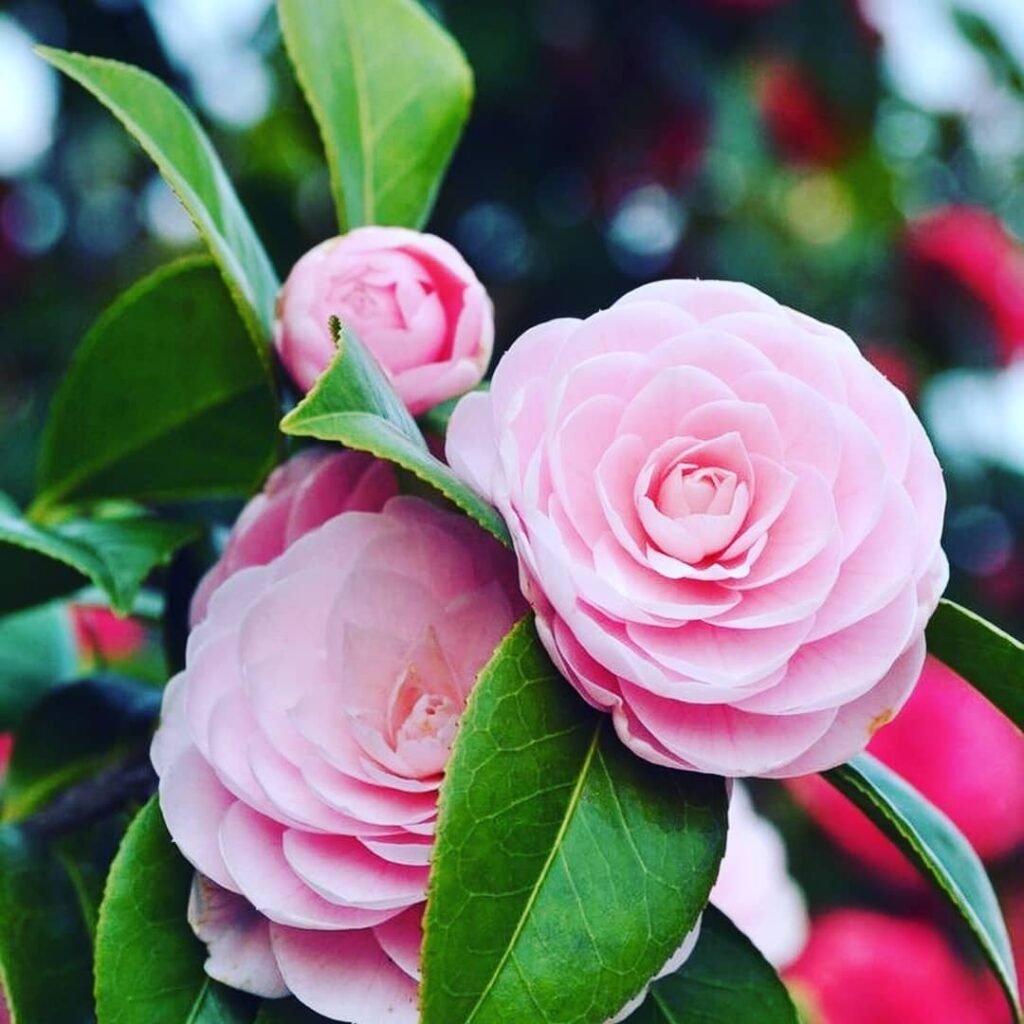
Here’s some information about Camellia, commonly known as Japanese camellia:
| Item | Information |
|---|---|
| Botanical Name | Camellia japonica |
| Plant Type | Evergreen Shrub |
| Zones | Typically Zones 7-10, but can vary depending on the species and variety |
| Exposure | Partial Shade to Full Shade |
| Bloom Time | Late Winter to Early Spring |
| Height/Spread | Varies by variety, typically 6-12 feet tall and wide |
pink perfection camellia japonica is a fragrant evergreen plant that flaunts its waxy pink flowers which especially give the feel of a garden in hot weather and permanent beauty is a symbol of hope.
10. woodland sage

Here’s some information about it:
| Item | Information |
|---|---|
| Botanical Name | Salvia nemorosa |
| Common Name | Woodland Sage |
| Plant Type | Perennial herb |
| Zones | Typically Zones 4-8, but can vary |
| Exposure | Full Sun to Partial Shade |
| Bloom Time | Late Spring to Early Summer |
| Height/Spread | Varies by variety, typically 12-24 inches tall and wide |
With its dark stems and spiky pink flowers, Caradonna Salvia nemorosa is a compact plant that catches the eye. It creates a stunning visual contrast that draws attention.
Conclusion:
These 10 pink flowers, with their scientific names, offer you many options to make your garden more attractive. Enjoy the variety of shapes, sizes, and types as you create a garden that reflects your personal taste. No matter if you’re growing a peaceful haven or a lively oasis, these pink beauties will enrich your gardening experience, giving you glimpses of natural beauty.
Don’t forget, the real wonder of gardening is in caring for and seeing your garden flourish. Have fun planting!
Pingback: Creating a Vegetable Garden: Easy Vegetables to Grow
Pingback: Creative Ideas for DIY Indoor Plant Projects -
Pingback: 15 Alstroemeria Tattoo Ideas to Inspire Your Floral Ink
Pingback: How To Grow And Care For Climbing Roses - Gardener's School
Pingback: How to Grow and Care for Fuchsias - Gardener's School
Pingback: How to Grow and Care for Azaleas - Gardener's School
Pingback: 15 Plants with Purple and Green Leaves - Gardener's School
Pingback: 10 Stylish Indoor Plant Pots to Elevate Your Green Oasis
Pingback: Evergreen Groundcovers: Benefits and Types
Pingback: Beauty of Panicle Hydrangeas: A Comprehensive Guide -
Pingback: 35 Pink Flowers That Will Enchant Your Garden
Pingback: Beauty of Blue Roses: 10 Best Varieties and Their Symbolism
Pingback: 14 Summer Flowers for Your Garden Gardeners Schoo
Pingback: Circle Garden Design: Crafting Elegance in Your Outdoor
Pingback: Grow Your Quirky Tractor Seat Plant: A Comprehensive Guide
Pingback: How to Grow and Care for Areca Palms - Gardener's School
Pingback: How to Grow and Care for Pink Quince: A Complete Guide
Pingback: Maidenhair Fern Care : A Comprehensive Guide for Lush and Healthy Growth - Gardener's School
Pingback: Elatior Begonia : Care Tips and Growing Techniques